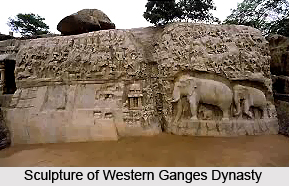 Nilgiris District as a result of its natural charm and pleasant climate was a place of special attraction for the Europeans who ruled over India for a long period of time. In the year 1818, Mr. Whish and Kindersley, who were then the assistants to the Collector of Coimbatore, discovered the place Kotagiri near Rengaswamy Peak in the Nilgiris district of Tamil Nadu. The then Collector of Coimbatore, John Sullivan, was greatly interested in this part of the country. He established his residence there and reported to the Board of Revenue on the 31st of July 1819.
Nilgiris District as a result of its natural charm and pleasant climate was a place of special attraction for the Europeans who ruled over India for a long period of time. In the year 1818, Mr. Whish and Kindersley, who were then the assistants to the Collector of Coimbatore, discovered the place Kotagiri near Rengaswamy Peak in the Nilgiris district of Tamil Nadu. The then Collector of Coimbatore, John Sullivan, was greatly interested in this part of the country. He established his residence there and reported to the Board of Revenue on the 31st of July 1819.
The name `Nilgiris` means Blue hills, where `Neelam` means blue and `giri` means hill or mountain. The first mention of the name of this district in Tamil Nadu has been found in the Shilapaddikaram. There is also a belief that the people living in the plains at the foot of the hills, should have given the name, the Nilgiris, with regard to the violet blossoms of Kurinji flower enveloping the hill ranges periodically. The earliest reference to the political history of the district of Nilgiris, relates to the Ganga Dynasty of Mysore.
Just after the Nilgiris was ceded to the British in the year 1789, it formed a part of the district of Coimbatore. In the month of August 1868, the Nilgiris was again separated from the Coimbatore district. The administration of this district was taken over by James Wilkinson Breeks who became the Commissioner of Nilgiris. In the month of February 1882, the Nilgiris was made a district and a Collector was appointed in the place of the Commissioner. On the 1st of February 1882, the then Commissioner of Nilgiris, Richard Wellesley Barlow, became the first Collector of Nilgiris district. The district is having a good communication system. The Nagapattinam-Gudalur National Highway passes through this district. All the taluks of this district are suitably connected with major district roads. There is however no sea port or air port in the district of Nilgiris.






